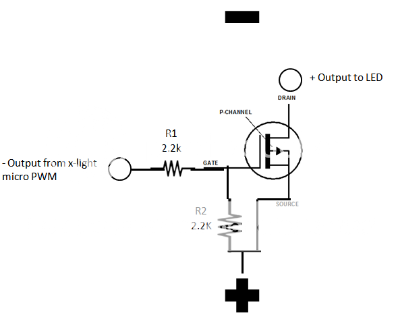Hi,
difficult to put a clear title, but this is what I'm looking for:
A driver chip for high power LEDs that is constant current, and where the output current can be controlled using a PWM signal while the output is not a PWM output.
So, I'd like to use a PWM signal to control the output current instead of what is done usally,run LED at full power and pulse the LED to dim the overall averaged output).
This would mean that by changing the duty cycle, one would change the actual current to the LED.
Is anyone aware of such a driver chip?
I'm looking for controlling currents in the 100mA-1000mA range more or less but anything that comes close is probably a good start.
Thanks,
Johan
difficult to put a clear title, but this is what I'm looking for:
A driver chip for high power LEDs that is constant current, and where the output current can be controlled using a PWM signal while the output is not a PWM output.
So, I'd like to use a PWM signal to control the output current instead of what is done usally,run LED at full power and pulse the LED to dim the overall averaged output).
This would mean that by changing the duty cycle, one would change the actual current to the LED.
Is anyone aware of such a driver chip?
I'm looking for controlling currents in the 100mA-1000mA range more or less but anything that comes close is probably a good start.
Thanks,
Johan


